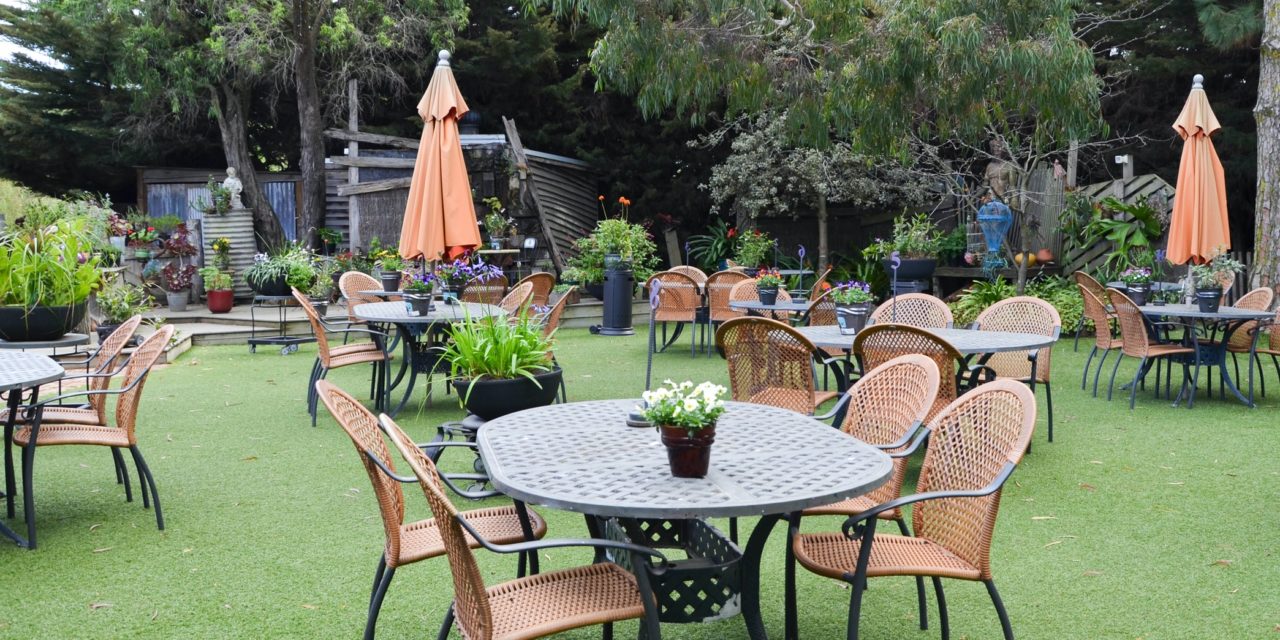[ad_1]
The wind can be a fickle friend. One moment you're basking in a breeze that borders on tropical and the next moment your chasing your patio furniture down the street as a tempest rolls out of nowhere.
If you've invested in wood, steel or wrought iron patio furniture, you probably don't have to worry about staying in shape enough to do the 50 yard sprint after an errant chair. But if you have lighter pieces, such as aluminum or plastic, you need to find some way to keep them anchored in your yard, especially when you're not there to watch over them.
One of the big culprits when it comes to flying furniture is your patio umbrella. If you don't have It properly anchored it can take your table with it, even one that's just been set with your fabulous fare. Of course, this is easily preventable. You can buy a weighted base for your umbrella. Usually, these bases are filled with sand or water and will keep your umbrella from doing a Mary Poppins on you, sailing for points unknown. The weighted base will keep it firmly in place, and your table, too.
Plastic chairs are a little more difficult to keep under control. When they're not in use, it's a good idea to keep them stacked up. This adds a little more heft to their otherwise airy qualities and will keep them from flying away. In a stiff wind they may scoot some across the patio or deck, but they won't wander too far off.
During events it's less of a problem since a seated guest will keep them in place just fine. But what if you get up to stretch your legs or go inside for a while? What about your chair? In most cases, no need to worry. These chairs usually take off when there is a straight shot of wind. By the time it winds its way around the other gathered guests, a sudden wind won't have the force to take your chair far, if it moves at all. If your chair is gone when you return, better to blame a thieving guest than the wind.
If you plan to store your outdoor patio furniture over the winter months, you'll want to take some additional measures. Although it isn't pretty, a cinder block tied to the bottom chair will serve as an effective anchor for a stack of plastic patio chairs. This is even more important if you've covered them for the season. The tarp can act like a sail, making your chairs even more likely to wander off.
For a table, it's best to tip the plastic ones on their side and leave them against the house. This will keep them from blowing around too much, since the table's large surface is turned against the house and it's hard for the wind to catch it.
Aluminum chairs aren't as big of a problem for homeowners, unless you live in a really windy part of the country or are dodging a hurricane down on the Gulf. To keep these chairs in place, a cable or a rope will do. Be sure to attach it or tie it to something sturdy like a deck railing. If you live in a crime ridden area, you can get a lock and cable and kill two birds with one stone, ensuring that your furniture won't wonder off due to light winds or light fingers.
Ideally, though, it's best to store lighter furniture away in a shed or in the garage during the off season. If you have an elevated deck, you can always tuck them under it in the winter months, knowing that they will be there waiting for you when the ground thaws and the flowers bloom once again.
[ad_2]
Source by Jennifer Akre


